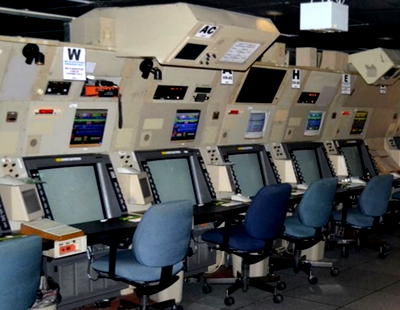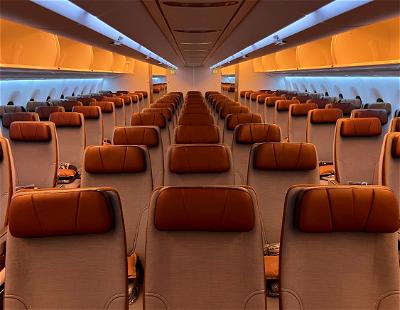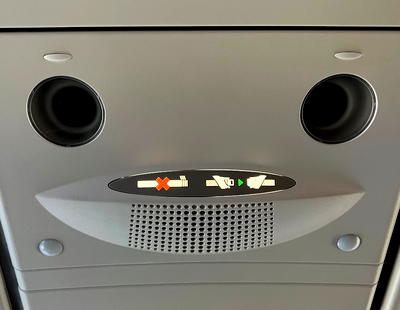A seaplane had a major accident yesterday in Vancouver, though fortunately there were no fatalities. This could have ended a lot worse.
In this post:
Harbour Air plane has accident in Vancouver
Harbour Air is a well respected airline that operates out of British Columbia, with the carrier’s fleet consisting of seaplanes that offer tours of the area, as well as some short distance flights. The airline has roughly 40 aircraft — it’s one of the largest seaplane airlines in the world, and carries around half a million passengers per year.
Unfortunately on Saturday, June 8, 2024, passengers wanting to enjoy an aerial tour of the area had a bit more of an adventure than they bargained for. Shortly before 1PM, a Harbour Air turboprop was speeding up to take off from the water near Canada Place, when it collided with a small boat.
In the video, you can see the aircraft accelerating on the water and then directly colliding with a boat, prior to briefly becoming airborne, and then falling back in the water and sinking.
There were five passengers on the aircraft and four passengers on the boat, and some have sustained injuries, and were taken to local hospitals. However, none of the injuries are life threatening, and there were no fatalities.
Boats in the area stepped in to rescue the passengers who were in the water, given that the aircraft was sinking. The airline released the following statement:
“Upon takeoff, while operating a scenic tour with five passengers onboard, our aircraft came into contact with a boat. All five passengers on the aircraft and the pilot, are uninjured and safe.”
Thank goodness this incident didn’t have a worse ending, especially for the people on the boat (as they were arguably in the more vulnerable situation).
How does a seaplane accident like this happen?
This is way beyond my area of expertise, but does anyone have insights as to how exactly seaplanes ordinarily operate in the water so safely, avoiding boats? There are obviously no “formal” runways in the water, since the takeoff direction varies based on weather conditions, winds, etc.
Obviously one of the selling points of seaplanes is that they can take off and land just about anywhere, including in areas that don’t see many other aircraft.
However, Vancouver sees around 50,000 seaplane movements per year, so there are nearly 150 seaplane flights per day. I know all the Harbour Air aircraft park in one area, and then “taxi” (on the water) to their takeoff point. Obviously a well organized system exists.
Are boats supposed to avoid that potential takeoff area altogether, are boats supposed to give way to the seaplanes, are seaplanes supposed to be on the lookout for boats, or what?
I guess it’s safe to say that this system works a vast majority of the time, since we hear about these kinds of incidents surprisingly rarely. But when it does happen, you can’t help but wonder how…
Bottom line
A Harbour Air seaplane had a serious accident in Vancouver. While trying to take off, the aircraft collided with a boat, causing the airplane to briefly become airborne, and then fall back in the water and sink. While there were injuries from this incident, there at least weren’t fatalities. Harbour Air operates tens of thousands of flights per year, so it’s rare to see something like this…
What do you make of this seaplane incident?





Licensed maritime captain and private pilot. The maritime regulation "Rules of the Road" dictate that seaplanes are to be classed as vessels a long as they touch the water. While classed as vessels the standard give way rules apply, in this case the float plane approaches from the boats port side and is thus the give way vessel. Strictly speaking as they are both vessels at that point, the boat was in the right. Now...
Licensed maritime captain and private pilot. The maritime regulation "Rules of the Road" dictate that seaplanes are to be classed as vessels a long as they touch the water. While classed as vessels the standard give way rules apply, in this case the float plane approaches from the boats port side and is thus the give way vessel. Strictly speaking as they are both vessels at that point, the boat was in the right. Now the argument could be made that there is special use area "designated float plane operations zone" (im not sure if there is there or not) which would give the float plane the right, but the overall rule is to never force a collision, clearly neither one would have wanted this outcome and it appears just an accident. Pilots are trained to expect boats to do the unexpected, I think this may come back as Harbor Air at fault.
Harbour Air operates really good seaplanes and are very professional, I've flew with them a couple of times.
Harbour Air operates really good seaplanes and are very professional, I've flew with them a couple of times.
I understand how the seaplane pilot obviously saw the boat too late and couldn't really do anything but surely the boat driver would have seen and heard a seaplane hurtling towards them and just push the throttle and get out of the way.
I have some experience driving boats and this baffles me and it is a small leisure craft which are easy and quick to manoeuvre.
Better video here: https://www.reddit.com/r/vancouver/comments/1dbgzsl/not_my_video_but_it_happened_today_downtown/
Fly Harbour air or their sister company Seaair monthly sometimes several times per months for work . In Vancouver harbour th set up is very similar to an airport with runways and tower etc at both Vancouver harbour and the other location on the river in Richmond . I sit next to the pilot regularly in a Beaver or an Otter and wear the headset and listen to the tower and pilot. Runs exactly like...
Fly Harbour air or their sister company Seaair monthly sometimes several times per months for work . In Vancouver harbour th set up is very similar to an airport with runways and tower etc at both Vancouver harbour and the other location on the river in Richmond . I sit next to the pilot regularly in a Beaver or an Otter and wear the headset and listen to the tower and pilot. Runs exactly like an airport and that boat had no business in that area. That being said float plane accidents around BC are not uncommon , including one a few years ago where a beaver was brought down by young passengers who grabbed the controls.
Since Coal Harbour has a control tower I am surprised than noone has mentioned anything about the control tower not monitoring the takeoff area and warning the pilot of an incursion.
Hopefully there is some learning possible from this potentially disastrous accident on the part of everyone involved.
I worked in HC tower for a few years, many years ago. As far as I can tell, what was true back then is still true: the aircraft operations areas are informally defined, and, boaters are under no obligation whatsoever to avoid them. I personally spent all day every day watching boats cross back and forth across the "runway" (aka. Area Alpha), without incident. Well, until now. (This is a lot different from Victoria Harbour...
I worked in HC tower for a few years, many years ago. As far as I can tell, what was true back then is still true: the aircraft operations areas are informally defined, and, boaters are under no obligation whatsoever to avoid them. I personally spent all day every day watching boats cross back and forth across the "runway" (aka. Area Alpha), without incident. Well, until now. (This is a lot different from Victoria Harbour by the way).
I just reread the Canadian government watercraft rules here and I'm not an expert but they suggest to me that the pilot, not the boat, was at fault, based on the boat being to starboard of the departing airplane. Also you'd think someone accelerating rapidly into traffic would be the one obligated to avoid, not the guy chugging along minding his own business.
A LOT of boat operators are idiots. Had someone almost slam into me yesterday, they had quite literally the entire Puget sound to avoid me
Idiots, or drunk (or some combination). You can walk up to a shop in Seattle, wave a credit card, and rent a kayak or electric boat or a a "hot tub boat" (essentially a floating hot tub), with zero supervision, training, or accountability, and drink all you want as you learn to do it. These businesses are within spiting distance of busy seaplane runways.
What could possibly go wrong?
Seaplane pilot here too. Typically, when a seaplane starts its “slide”, the nose pitches way upwards (ie toward the sky with no forward view) during the “plow” stage until the plane makes it onto its “step” at which point you get forward view again. This may have contributed - but I’m not sure sure from the video exactly how long the plane had been sliding (ie it was def “on step” at the time of...
Seaplane pilot here too. Typically, when a seaplane starts its “slide”, the nose pitches way upwards (ie toward the sky with no forward view) during the “plow” stage until the plane makes it onto its “step” at which point you get forward view again. This may have contributed - but I’m not sure sure from the video exactly how long the plane had been sliding (ie it was def “on step” at the time of collision, but not sure exactly how much time the pilot had after its plow before the collision).
With regard to boats, I was taught to assume that “boats don’t know what they’re doing, so assume they’re gonna do something silly.” It is definitely see and avoid as mentioned above, but sometimes you may momentarily lose complete situational awareness as something in the cockpit calls your attention. This may have also contributed.
In this case, I see a second boat going towards the right. It’s possible that this boat masked / hid the left bound boat at the moment when the pilot did one last scan before entering the plow (ie adding power). When s/he got onto step and could see forward again, the left bound boat may have momentarily been behind the right hand side windscreen side bar - again temporarily and unluckily obscuring the view.
It does look like the pilot tried to coax the plane airborne to clear the boat as the boat came center vision (ie pilot def saw the boat at some point) - as by that time, it was likely too late to pull power (ie the alternative would have been a head on - in water, flush, collision which would have surely been much worse).
Definitely no expert here, but as with many accidents, it appears it could be a range of stacking, contributing adverse factors.
Vancouver Harbour CYHC has a control tower and the Port of Vancouver has made it very clear boats are to remain clear of the aircraft operations zone.
There are defined procedures both in and out of CYHC as well as a series of set water runway locations and in all cases the aircraft have right of way over boats in this area.
I've flown with Harbour Air a few times including once in...
Vancouver Harbour CYHC has a control tower and the Port of Vancouver has made it very clear boats are to remain clear of the aircraft operations zone.
There are defined procedures both in and out of CYHC as well as a series of set water runway locations and in all cases the aircraft have right of way over boats in this area.
I've flown with Harbour Air a few times including once in a DHC2 Beaver (the type involved here) right next to the pilot. Forward visibility on take off is very nose high, there is no way you could see a small boat below and infront of you so the pilot likely had no idea it was even there until he/she hit it.
There's a much more clear video of the collision here:
https://www.cbc.ca/player/play/video/9.6417666
You can see that the forward visibility angle from the cockpit is very upward and at no point would the boat have been visible to the pilot.
The boat should never have been there in the first place but one has to wonder what the boat was doing. The aircraft would have been visible from the point it started its takeoff run and also audible and yet it made no effort to avoid the collision at all.
Thanks for the link, ATC. One thing it shows is that the struck boat appears to immediately go to the aid of the downed seaplane, even though there were apparrently injured passengers in the boat. Even if the boater was in error, his/her subsequent response is commendable.
As much as I'd like to think that was the case, I have to disagree based on what I see in the video. The boat operator was at best, disoriented after being hit and at worst, unconscious, so what we're seeing is not someone with a super-human presence of mind to turn their boat and go to the scene to offer aid, but rather, a boat being struck and turned from the impact into the...
As much as I'd like to think that was the case, I have to disagree based on what I see in the video. The boat operator was at best, disoriented after being hit and at worst, unconscious, so what we're seeing is not someone with a super-human presence of mind to turn their boat and go to the scene to offer aid, but rather, a boat being struck and turned from the impact into the direction of the plane and simply moving in that direction under its own power with no manual input from the operator. In fact, you can clearly see it strike the tail of the plane and pass under it. That certainly wasn't intentional so there was no operator input, IMHO.
Airplane pilot here who lives in a city that has intensive seaplane operations close-in on bodies of water that are often VERY crowded with boats of all sizes (and some of those boats are operated by completely clueless locals and tourists, people who have never been in a boat before and/or may be drinking at the time)...
How does it work? It's called "see and avoid" and it's why there are human pilots on airplanes...
Airplane pilot here who lives in a city that has intensive seaplane operations close-in on bodies of water that are often VERY crowded with boats of all sizes (and some of those boats are operated by completely clueless locals and tourists, people who have never been in a boat before and/or may be drinking at the time)...
How does it work? It's called "see and avoid" and it's why there are human pilots on airplanes (and on boats). Someone - probably the pilot but maybe also the boat driver - obviously failed in this basic requirement. Most of the time things work out, but nobody's perfect.
Sea Plane Pilot here. In large open lakes, we usually make a pass over the area we plan to land before landing to ensure it's free of debris, people, and boats. For take off at an organized sea Plane operation like this one, there will be area that are designated for landing and take off. Boat operators
that need to pass through these areas, do it as quickly as possible, when it's clear but...
Sea Plane Pilot here. In large open lakes, we usually make a pass over the area we plan to land before landing to ensure it's free of debris, people, and boats. For take off at an organized sea Plane operation like this one, there will be area that are designated for landing and take off. Boat operators
that need to pass through these areas, do it as quickly as possible, when it's clear but it's also on the seaplane to make sure the area is clear before takeoff. It seemed like the boat was lingering in the designated area, curios if the boat operator was a local. One thing to note, it's really hard to see directly in front when taking off as the plane pitches up, so if u visual cleared it take off area then something drives into it and stops stuff like this can happen.